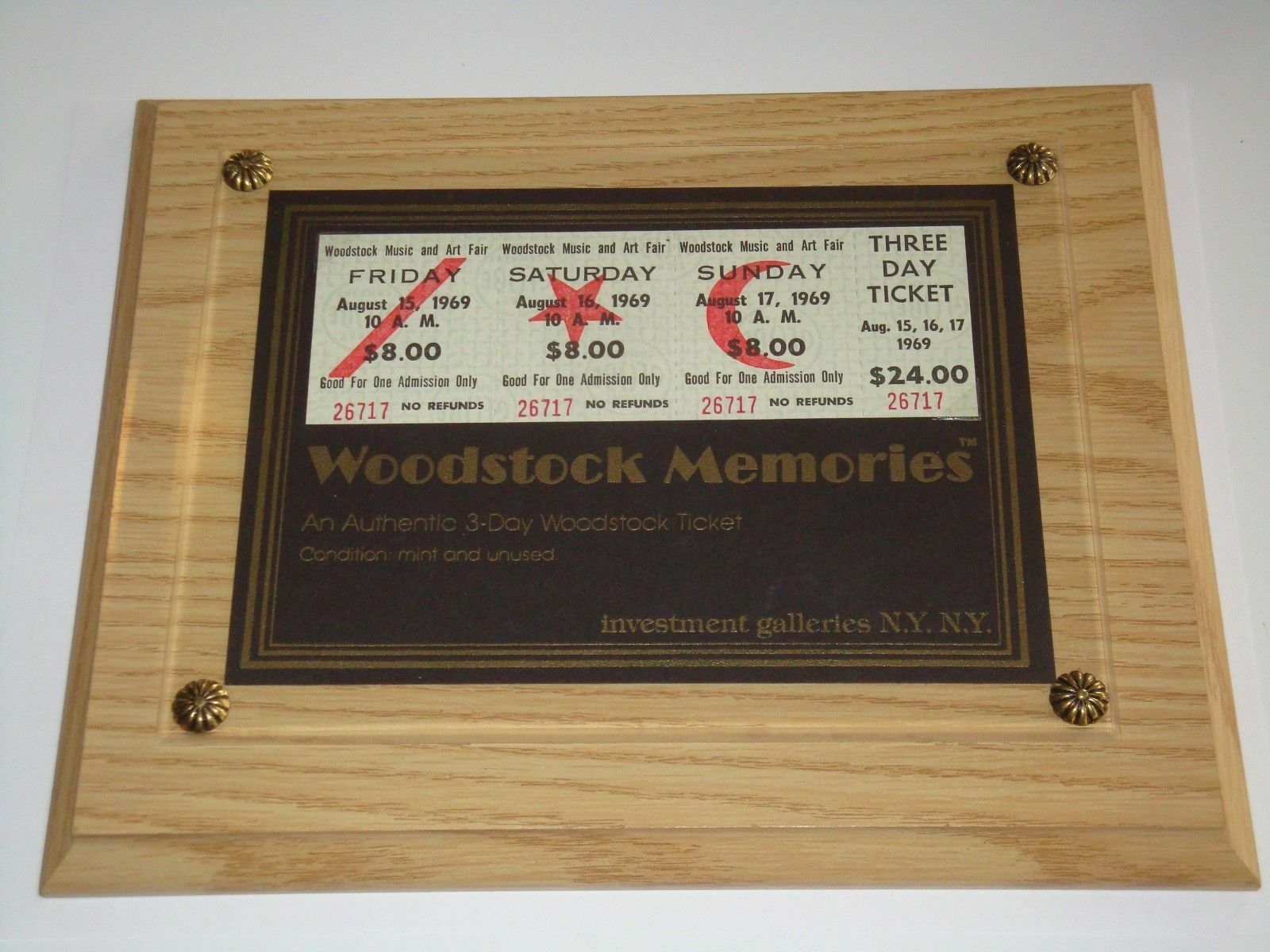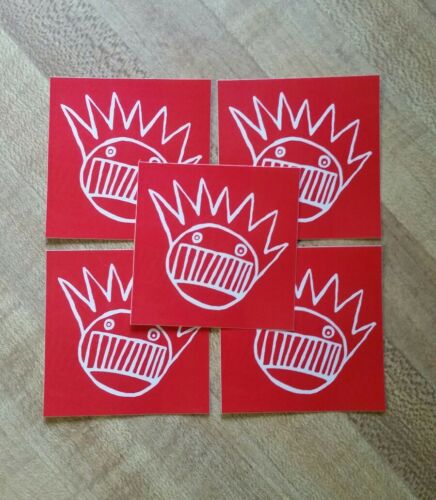-40%
WOODSTOCK 3 DAY 1969 ORIGINAL TICKETS JIMI HENDRIX SANTANA DEAD JANIS JOPLIN USA
$ 95.02
- Description
- Size Guide
Description
THE 1969 WOODSTOCK MUSIC AND ART FAIR FESTIVAL3 DAY UNUSED TICKETS
AUGUST 15, 16, & 17, 1969
Max Yasgur's 600 acre dairy farm
Bethel, New York
AUTHENTICATED
Also included will be a letter from Sotheby's stating in 1981 the value of these tickets were estimated to be 0.00
A copy of original letter is attached on the back of this plaque
.
The plaque measures 8 x 10 inches and 1 inch thick
OVER 51 YEARS AGO !
SEE ALL 11 PHOTOS
Richie Havens
Sweetwater
Bert Sommer
Tim Hardin
Ravi Shankar
Melanie Safka
Arlo Guthrie
Joan Baez
Quill
Country Joe McDonald
John Sebastian
Keef Hartley Band
Santana
The Incredible String Band
Canned Heat
Mountain
Grateful Dead
Creedence Clearwater Revival
Janis Joplin with The Kozmic Blues Band
Sly & the Family Stone
The Who
Jefferson Airplane
Joe Cocker
Country Joe and the Fish
Ten Years After
The Band
Johnny Winter
Blood, Sweat & Tears
Crosby, Stills, Nash & Young
Paul Butterfield Blues Band
Sha-Na-Na
Jimi Hendrix
The Woodstock Music and Art Festival was a rock festival held at Max Yasgur's 600 acre (2.4 km²) dairy farm in Bethel, New York from August 15-18, 1969. It is arguably but very widely viewed as the most famous rock festival ever held. For many, it exemplified the counterculture of the 1960s and the "hippie era". Many of the best-known musicians of the times appeared during the rainy weekend, captured in a successful 1970 movie, Woodstock. Joni Mitchell's song "Woodstock", which memorialized the event, became a major hit.
The festival
The festival bears the name "Woodstock," because it was originally scheduled to take place in the town of Woodstock, in Ulster County, yet the town lacked an appropriate venue for such a large event. A site was found in the town of Wallkill. When local opposition arose, the event was almost cancelled, but Sam Yasgur persuaded his father Max to allow the concert to be held on the family's alfalfa field, located in Sullivan County, about 40 miles southwest of Woodstock. Although the show had been planned for a maximum of 200,000 attendees, over 500,000 eventually attended, most of whom did not pay admission. The highways leading to the concert were jammed with traffic. People abandoned their cars and walked for miles to the concert area. The weekend was rainy, facilities were overcrowded, and attendees shared food, alcoholic beverages, and drugs. Local residents of this modest tourist-oriented area gave blankets and food to some concertgoers. Overall, attendees were remarkably well-behaved. The festival did not initially make money for the promoters, although, thanks to record sales and proceeds from the highly regarded film of the event, it did eventually become profitable. Two people died at Woodstock: one from a heroin overdose and one from being run over by a tractor while sleeping in a nearby hayfield. Two unconfirmed births reportedly occurred at Woodstock. Among the stars of Woodstock were The Who and Jimi Hendrix. Due to arguments with the promoters about their pay, The Who didn't take stage until about 4:00 in the morning. One highlight of The Who's performance was "See Me, Feel Me", when the sun rose just as lead singer Roger Daltrey began to sing the chorus. At one point during The Who's set, political activist Abbie Hoffman interrupted the show and attempted to rally the crowd with yippie slogans, but was knocked off the stage by the swinging guitar of the band's leader, Pete Townshend, to the delight of the audience. At the conclusion of The Who's set, Townshend smashed his guitar and threw it into the crowd. This moment helped establish The Who as superstars and boosted their album Tommy to sell multi-platinum. Jimi Hendrix had a big impact with his performance, including a distorted version of "The Star Spangled Banner". The song was somewhat controversial, as the Vietnam War was underway and the sound effects that Hendrix generated with his guitar paralleled the sounds of the violence of the conflict. These two performances are held by fans as some of the greatest in rock history, though both The Who and Hendrix regarded their performances as sub-par. Woodstock's promoters were Michael Lang, Artie Kornfeld, John Roberts and Joel Rosenman. Roberts was the financer, backed by a trust fund bankroll; his friend Rosenman, a graduate of Yale Law, was an amateur guitarist. Their associates were Kornfeld, a vice-president at Capitol Records, and Michael Lang. An unlikely businessman, Lang was a light-hearted hippie who had owned a head shop and hoped to build a recording studio in the Woodstock area to serve artists such as Bob Dylan and Janis Joplin, who had homes nearby. When Lang and Kornfeld presented the idea to Rosenman and Roberts, Rosenman hatched the idea of a rock concert with the same performing artists. After toying with an Age of Aquarius theme, they settled on the slogan "Three Days of Peace and Music", partly as a way to placate suspicious local officials and partly to appeal to anti-war sentiment. They hired commercial artist Arnold Skolnick to design the artwork, which incorporated a catbird design. Lang would go on to produce successor concerts in 1994 and 1999, but he did not participate in the Woodstock-named concerts of 1979 and 1989. In 1997, the site of the concert and 1,400 surrounding acres were purchased by Alan Gerry for future development as Performing Arts Center under the Gerry Foundation. In 2000, the Gerry Foundation announced that the original 38 acres of the Woodstock site were to be preserved.


















